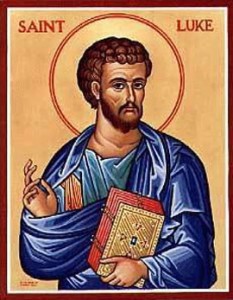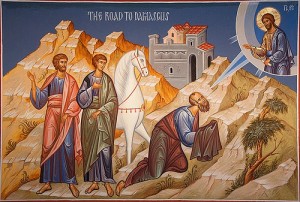Luke doesn’t feel the need to hide behind the pseudonym of an apostle to give his writings authority, as so many other authors of his era do.
What is supposed to be so compelling about the Gospel of Luke, the Acts of the Apostles, and the orderliness of it all? It’s a good question and one to which the author himself must have had an answer.
The blasé reply is that the author thought that his order was, chronologically, more accurate as to what came first, what came second, and so on. Is this the complete answer? Something like this could definitely be implied by the author for his reader to believe from the preface as a way to impress the reader with the work’s authority. However, I think there’s another answer that’s just as important to the author that has evidence in the text itself.
That answer is that Luke (so named for convenience instead of “the author of Luke-Acts”) arranged the stories in a better order so as to be more easily remembered by the early Christians. Ancient authors were, of course, keenly aware of the omnipresent orality of their culture (though not, of course, in so many words). Whether through simple chiasmus or with elaborate imagery mnemonics, many of them deliberately arranged their work for easy recall.
Brian LePort starts a recent post asking why Luke-Acts seems to be reconciling the disciples of John and of Jesus. He starts from the parallelism of the births of John and Jesus, continues through the gospel where John marks the end of an old age and Jesus the beginning of a new one, and concludes with remarks on the Acts of the Apostles where the baptism of the holy spirit is a continuation of the baptism of John. (Check out the discussion on his Near Emmaus blog. He also notes the parallels drawn between Peter and Paul.) Could this show that Luke-Acts had as one of its purposes to subvert a community around John the Baptist with an emphasis on his role as predecessor? Perhaps.
Perhaps it’s just the fact that Luke is a crackling good writer, one who has planned his narrative from the start to the end, rehearsing his story for himself several times before releasing it to a gospel-hungry Christian public, finding the connections in his material and making them explicit in his text, producing a performance that sticks in your head.
If you view him as the last canonical gospel writer, as I do, you can’t help but be impressed with how his work grew popular based primarily on its production values rather than by making an apostolic claim for the text.
How did his gospel stand out against the growing tide of apocryphal literature when it came time for churches to decide which ones to use? He was honest about his intent to tell a right good story, and he followed through. He gave more than expected by adding the Acts of the Apostles to his gospel for an innovative “double feature.” Whereas John impresses its reader with its deep theological discourse, the gospel writer Luke braves the task of doing a gospel like Matthew or Mark, only better.
This idea can be illustrated from the central section of Luke, which has often troubled scholars with its odd geography and impressed them with its extensive chiasm. This section has been noted, in synoptic problem studies, as disagreeing violently with the order of Matthew. (This makes a stark contrast with what goes before and after the central section in the Gospel of Luke, as the beginning and end hug Mark and Matthew pretty closely.) That Luke should bring havoc upon his sources is not too surprising after the evangelist himself invites a contrast with the order of those who wrote before him.
As some urge, the principle by which Luke rearranges may best be understood as chiasmus, and the frequent details about the location of Jesus and his progress to Jerusalem may be understood as additional signposts provided for the reader (the hearer) of the Gospel of Luke. They are there so that those listening can associate them with the particular episodes narrated and, so Luke hopes, remember the whole sequence with all its scenes in their head.
If the central section of Luke illustrates it, the Acts of the Apostles itself embodies it, as it talks about travels from this place to that and quotes long, structured, invented monologues. The whole scope of Acts is already written out in miniature in the words of the risen Jesus of Acts 1:8, using geographical markers, “But you will receive power when the Holy Spirit comes on you; and you will be my witnesses in Jerusalem, and in all Judea and Samaria, and to the ends of the earth.”
Many have noted the similarity of Paul to Peter as well as the similarity of Paul to Jesus. Brian LePort (above) picked up on some of the similarities between Jesus and John the Baptist in Luke-Acts.
One hypothesis is that the author wants his audience to associate John the Baptist with Jesus in the same way that the author wants his audience to associate Peter with Paul, as a kind of harbinger. Moreover, the author wants all of this repetition to be recognized by listeners to the Gospel and Acts, so that they remember in detail the deeds of these four important figures.
This, incidentally, can explain why James, a brother of the Lord, attested elsewhere as important to early Christianity, gets so little play in the Acts of the Apostles. Maybe it is because it doesn’t fit into the clean arcs of narrative development that the author wants to be crystal clear.




[…] my last post, I drew together some lines of thought. (1) The Gospel of Luke’s preface says the writer is […]